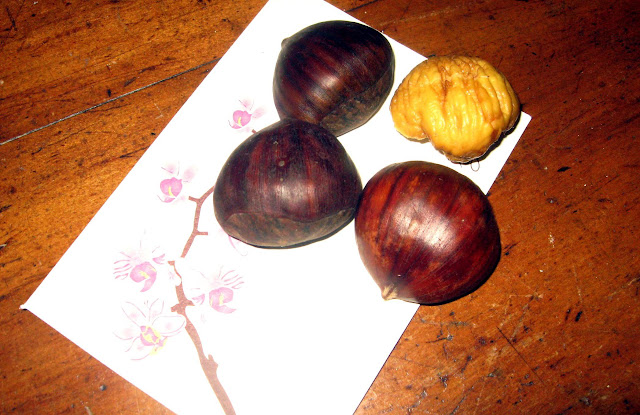
Chestnuts are revered in Europe with the Mediterranean cultures particularly adamant about including the treasured nut in their diet. Chestnut eating in Italy has been glorified since ancient times and both Homer and Virgil mention chestnut trees and their cultivation near Rome beginning around 37 B.C.
Today, Italian chestnuts, with their characteristic flattened side, come in many varieties but the most popular include castenea (small variety) and marroni (larger variety) and they are mostly grown in walled orchards south of Naples in the Avelino area (the species is called C. sativa). In Italian society both the poor and rich ate chestnuts and they continue to be consumed in many variations, including roasted, boiled, pureed, candied, preserved and ground into flour. In fact, before corn was introduced in Italy chestnut flour was used to make polenta.

The Scordo family consumes Italian chestnuts from late October through late January and we often roast and serve them as a post dinner snack with an extra glass of wine (I especially like roasted chestnuts with cold beer). Roasted chestnut are easy to make and including making a slight incision on the rounded portion of the nut and baking at 375 degree Fahrenheit for 15-20 minutes.
When you purchase Italian chestnuts (Chinese chestnuts are less sweet in flavor) in shells look for a dark brown exterior with no significant blemishes or cracks; moreover, the skin should be tight and healthy looking.


